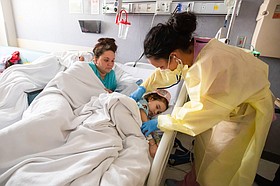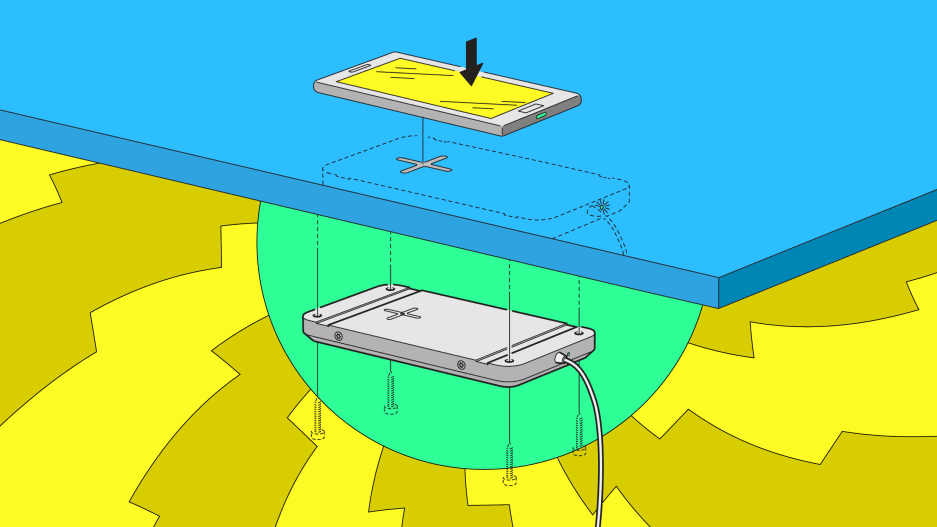Diabetic Ketoacidosis (DKA) Without High Blood Sugar? Yikes! was written by Moira McCarthy for DiabetesMine.com, 11 August 2021.
 If you live with diabetes, it was probably drummed into you that dangerous diabetic ketoacidosis (DKA) is a direct result of very high blood sugar. But guess what: The potentially life-threatening condition of DKA can also happen when your blood sugar is in the normal range. A number of people with type 1 diabetes (T1D) have learned this the hard way.
If you live with diabetes, it was probably drummed into you that dangerous diabetic ketoacidosis (DKA) is a direct result of very high blood sugar. But guess what: The potentially life-threatening condition of DKA can also happen when your blood sugar is in the normal range. A number of people with type 1 diabetes (T1D) have learned this the hard way.
Euglycemic Diabetic Ketoacidosis (EDKA) is different from regular DKA in just one critical way: It happens without elevated blood sugars, which are generally considered the hallmark of DKA and the fastest way to recognize it.
Experts say the most common reason for EDKA is one that is easily identified: the use of SGLT2 inhibitor drugs by people with T1D. These drugs prevent the reabsorption of glucose from blood that’s filtered through your kidneys, therefore facilitating glucose excretion in the urine. This helps to lower your blood sugar levels, but it can also trigger DKA. “That’s the cause almost exclusively setting this off,” Dr. Samar Hafida, a staff physician at Joslin Diabetes Center in Boston, told DiabetesMine. “Clinically, that’s the only time we are seeing it.” SGLT2 inhibitors transport glucose into the kidney quickly. That means that while a person may dose what seems like the correct amount of insulin, they can still have cells searching for fuel. The cells in search of fuel begin to burn fat, causing DKA.
Hafida said for those people taking SGLT2 inhibitors, diligently checking glucose levels and also using a blood ketone meter is key. So is knowing when to stop taking them. She said those times include:
-
- Before, during, and after a major procedure such as surgery, particularly if it includes fasting. She suggests people with T1D should stop the drugs a week prior to their procedure and stay off them at least until they are able to take food by mouth again.
- When experiencing any kind of illness that impacts the ability to stomach food or drink.
- If you are on a low-carb diet of any kind.
Dr. Ping H. Wang, diabetes researcher with the City of Hope in Southern California, feels the main step to avoiding EDKA with T1D is to not take SGLT2 inhibitors at all. “The FDA did not approve this medication for T1D and that’s the reason,” he said. “I would not recommend using them.”
Read more: Diabetic Ketoacidosis (DKA) Without High Blood Sugar?
Pediatric Diabetes Surge in Mississippi: Doctors Concerned COVID-19 Is To Blame was reported by Nick Judin for Mississippi Free Press, 20 September 20, 2021.
 Pediatric endocrinologists in Mississippi and across the nation are sounding the alarm that diabetes diagnoses in children are rising at staggeringly high rates during the pandemic. Dr. Jessica Lilley and Irena McClain fear that the virus behind COVID-19 is squarely to blame.
Pediatric endocrinologists in Mississippi and across the nation are sounding the alarm that diabetes diagnoses in children are rising at staggeringly high rates during the pandemic. Dr. Jessica Lilley and Irena McClain fear that the virus behind COVID-19 is squarely to blame.
Dr. Jessica Lilley, a pediatric endocrinologist at the Mississippi Center for Advanced Medicine, says, after conferring with other pediatric endocrinologists across the state and nation, the spike in new cases is widespread. “We are all seeing an increase in type 1 diabetes diagnoses as well as type 2 diabetes diagnoses. Those of us who tracked it have noticed anywhere from a 30% to 40% increase compared to (2019),” she told the Mississippi Free Press in a series of interviews in August and September.
experts are deeply concerned across the nation. In late June 2021, at the 81st Scientific Sessions of the American Diabetes Association, pediatric endocrinologist Dr. Brynn E. Marks of Children’s National Hospital warned of a “staggering increase in cases of type 2 diabetes,” as well as an “increase in the severity of (the disease’s) presentation.” Researchers presenting at the conference reported a doubling of youth hospitalization rates for type 2 diabetes, compared with the pre-pandemic period. Researchers in that study hypothesized that the indirect effects of quarantines, closures, and unemployment may have exacerbated the incidence and severity of the disease.
Read more: Pediatric Diabetes Surge in Mississippi: Doctors Concerned COVID-19 Is To Blame
Diabetes and Tuberculosis Link Quantified was written by Kristen Monaco for MedPageToday.com, 21 September 2021.
 Diabetes status may play a role in the risk for developing tuberculosis, a new study suggested. In a Korean population-based study, adults with diabetes had a 48% increased risk for developing tuberculosis compared with adults without diabetes, Dong Wook Shin, MD, DrPH, MBA, of Sungkyunkwan University School of Medicine in Seoul, and colleagues reported in JAMA Network Open.
Diabetes status may play a role in the risk for developing tuberculosis, a new study suggested. In a Korean population-based study, adults with diabetes had a 48% increased risk for developing tuberculosis compared with adults without diabetes, Dong Wook Shin, MD, DrPH, MBA, of Sungkyunkwan University School of Medicine in Seoul, and colleagues reported in JAMA Network Open.
This associated risk for tuberculosis also appeared to be tied to the duration of diabetes, with the risk increasing the longer the person had diabetes: The extent of risk for tuberculosis also seemed to be dependent on blood glucose levels.
Read more: Diabetes and Tuberculosis Link Quantified
Insulin resistance pinned to cell signaling defects that could act as therapy targets was shared by Joslin.org, 10 September 2021.
“Most people know that insulin is an important hormone for controlling blood glucose, but most people don’t realize how important insulin is for all aspects of metabolism – not just sugar, but lipids, amino acids and proteins,” said senior author Prof. C. Ronald Kahn.
“Insulin resistance, that is the failure of the body to respond normally to insulin, is very common in the population, not just in people with diabetes or obesity, and these individuals are at high risk for developing these metabolic disorders. So that is why we decided to study how insulin signaling is altered in cells from this insulin resistant part of the population,” he said.
Read more: Insulin resistance pinned to cell signaling defects that could act as therapy targets
This invisible gadget turns any table into a wireless phone charger was reported by Mark Wilson for FastCompany.com, 22 September 2021. A $40 device from Ikea can turn old furniture into a modern, mobile powerhouse. WOW!
 Thanks to Ikea, that day has arrived. Its $40 Sjömärke is a little gadget that you can stick to the bottom of any wood or plastic table with double-sided tape. Then? That table can wirelessly charge your phone.
Thanks to Ikea, that day has arrived. Its $40 Sjömärke is a little gadget that you can stick to the bottom of any wood or plastic table with double-sided tape. Then? That table can wirelessly charge your phone.
Are there any caveats? Oh sure, a few. You’ll need to plug the Sjömärke into an outlet to draw power, which will require you to discreetly snake the thin white cord down a table leg and to a wall. Not every table will work: you want the tabletop to be a little under an inch thick for optimal power transfer. Also, note that the whole surface of the table won’t suddenly be electric after installing the Sjömärke. You’ll need to line up your phone in the right spot to charge it. (Ikea includes a transparent sticker to mark the area. I suspect your own muscle memory will do the job just as well, without having to screw up the table’s veneer, once you live with the charger for a week.)
will it work for my phone? The answer is, probably yes! Tech companies including Apple, Google, and Samsung don’t agree on much. But their major smartphones all use the same wireless charging standard, called Qi. That’s the same standard Ikea products have adopted since the company began building wireless charging furniture in 2015. Qi’s low voltage means that it will charge your phone a bit slower than actually plugging it into a wall, but that’s a small tradeoff for something that will charge your phone every single time you put it down, automatically.
Read more: This invisible gadget turns any table into a wireless phone charger



Pediatric onset is darn scary I think I will forward this along to our sons and ex’s. I mean assuming they are still taking my emails these days. 🙂
rick
EDKA is scary! I got it once back in the late 1990s and all the doctors were baffled. Please note that there are ways besides medication to get it. I spent a week hiking 20+ miles per day and barely eating, purely because I was busy, during a vacation in Yosemite. Excessive exercise and drastically decreased food intake can cause it as well. Only one doctor at a prestigious hospital even knew it existed back then.